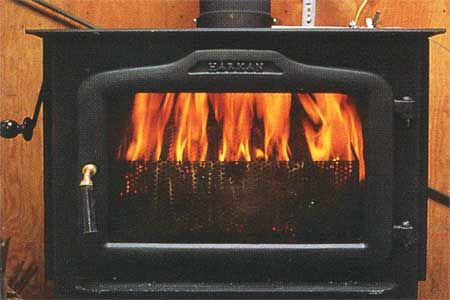Fireplaces and wood stoves are popular heating options in cold snaps, even if they aren’t the most convenient. Wood pellets are simple and more efficient, and you no longer need a pellet stove to burn them. Pellet baskets are add-on products that convert a fireplace or wood-burning stove into a pellet stove.
Why Pellets?
Pellets are typically made from compressed sawdust and wood waste products. Their lower moisture content helps them burn cleaner with less ash and creosote buildup. The high energy density also means using less material for the same heat.
While pellets are more foolproof than normal firewood, you should still follow proper storage practices. Keep them in a dry, covered area that’s off the ground, and use airtight containers for added protection against humidity.
Pellet Basket Features
Pellet baskets are usually made from steel and fit inside your fireplace or wood stove. Their sides and bottom feature weaving or dense air holes, divided into sections by front-to-back channels. You can purchase different sizes of baskets to accommodate different hearth sizes and fuel capacities. Some products can hold 10 to 18 inches, for around 10–20 pounds of fuel.
How To Use a Pellet Basket
Pellet baskets are more convenient, but they don’t change the important safety steps you should take to prevent injuries or fires from spreading where they shouldn’t.
Loading the Pellets
Position the pellet basket toward the front of your stove, and use a shovel to load pellets inside. Some may fall through the holes, which is normal.
Lighting the Pellets
Light your pellet fire using a starter block. Open the draft to heat the stove more quickly, then close back on it as needed to keep the fire going. If the pellets smoke, that’s a sign you need more air. Open the draft to move it inside.
Refueling Pellets
The pellets will burn down to a thin bed of embers. Drag them toward the front of the basket, then fill pellets behind the burning embers with your shovel. To prevent smoldering, don’t completely cover the embers with pellets. Open the draft to help ignite the new fuel, then adjust it as necessary to prevent smoking and keep the fire going.

